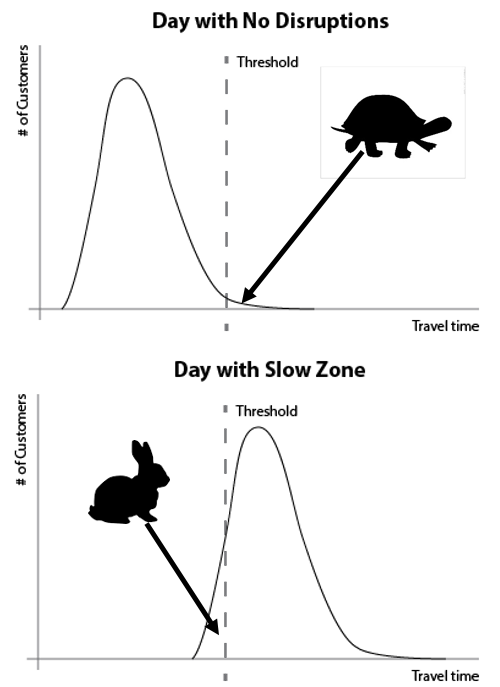Metro Planners Share Innovations in Transit Delay Calculation at TRB
Adopted from queueing theory, this new method of assessing delay on transit systems with tap-in-tap-out fare systems accounts for natural variations in customer behavior.
As you may have heard, Metro is testing out a new customer-oriented travel time performance indicator. Many departments here at Metro have been collaborating on this effort. Metro has decided to initially pilot a measure where we define delay as anything greater than train run time, a headway, and the 1-3 minutes it takes to travel from the faregates to the platform. However, as we began our research into customer travel time, we got to asking the question, “How do we define customer delay on the rail system?”

As we quickly learned when digging into the data, on good days with no delay on the rail system, there is still a wide variety of “normal” customer travel times. Some variation in travel time is because customers arrive at random to the origin station, but all leave the destination station more or less at once. Additional factors influencing this variation include walking speed, use of elevator vs. stairs, escalator or elevator outages, and customers with suitcases and strollers.
We could start with a threshold for “on time” but by definition we know on a good day there were no rail delays so we would be counting slower customers as “late.”
Additionally, on a day when we know a disruption has occurred, we might count very quick customers as “on time” when in fact we know that everyone experienced some delay.
So we set to determine a method for calculating delay that accommodated for the natural variation in customer speeds. These travel time curves started reminding me of delay calculations from queueing theory from grad school. Read more…



Recent Comments